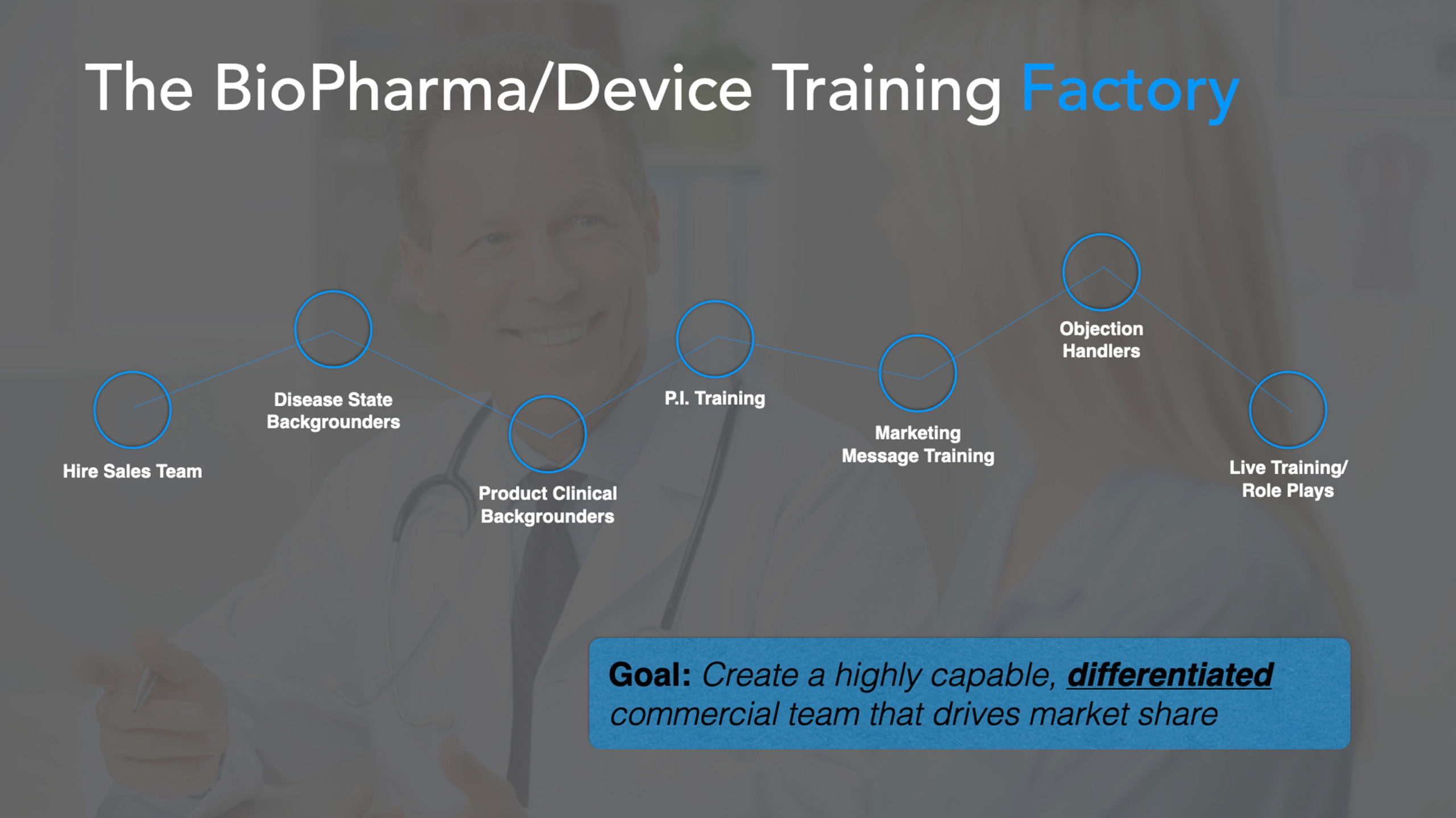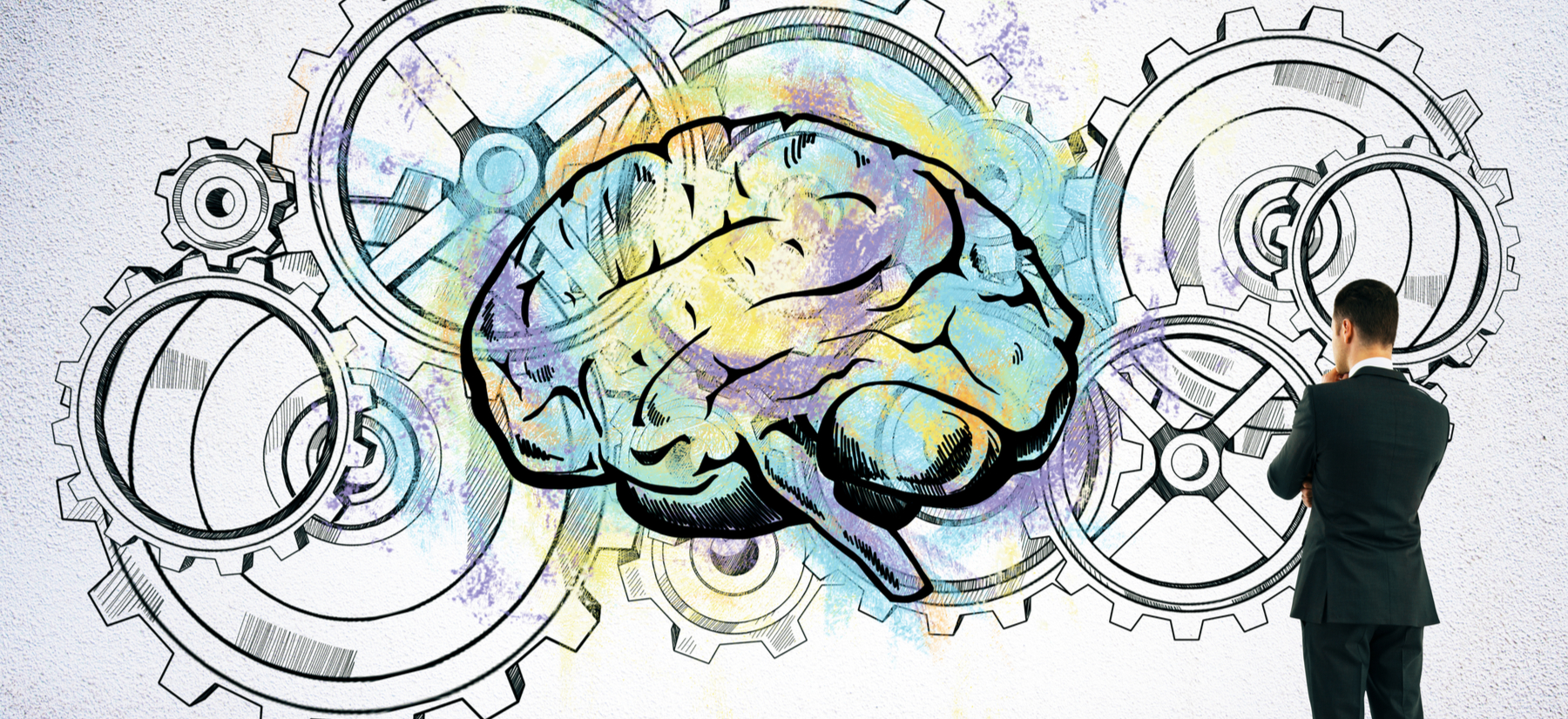How can you as a pharma leader break the “rep factory” cycle to drive better performance? The answer lies in communication and reversing your thinking about how you train and develop professional communicators within your organization. This is not based on opinion but decades of work in neuroscience by thought leaders around the globe. Jeff Bloomfield, the author of Story Based Selling and NeuroSelling®, has worked with organizations around the world to activate performance by applying neuroscience principles to help individuals communicate with more purpose, power, and impact. Both Jeff and I have spent a combined 40+ years in the pharmaceutical and biotech industries, so with that experience and the science to back it up, this article will explore three primary areas:
- To break the cycle, we must understand it and why it’s ineffective
- To do something different, we must understand the science
- To activate change, we must have an approach and act on it
Breaking the Cycle
See if this is a common narrative for you. You work hard to recruit and hire a new sales professional. The individual may be fresh to the industry, or they may be coming to you from another company. To compound the intensity of the hiring process, you also feel the pain of losing employees, and the time investment it takes to get a new team member up and running. But you do your job and get the new employee on board and into your pharmaceutical “rep factory” cycle.
The basic checklist for this familiar process is something like (Figure 1):
- Hire Sales Team
- Weeks of Home Study and Conference Calls
- Distribute Disease State Backgrounders
- Review Product Clinical Backgrounders
- Package Insert Training
- Marketing Message Training
- Objection Handlers
- Live Training
- Role Plays
- Send to the Field
 Next, you give them a territory, slap on a quota, and send them out to the market to sell. Here is the problem with this cycle… Where is the foundation of communication training? According to Warren Buffet, you can increase someone’s value by 50% when you invest in their written and oral communication skills.1
Next, you give them a territory, slap on a quota, and send them out to the market to sell. Here is the problem with this cycle… Where is the foundation of communication training? According to Warren Buffet, you can increase someone’s value by 50% when you invest in their written and oral communication skills.1
We have trained our sales teams to be transactionally focused and self-preservation minded. To drive decision-making and sustained change, we must break this mindset and put others in front of ourselves. Within our customer conversations, we must think about our customer more than ourselves.
First, recognize the barriers to change beyond self-preservation, including the following:
- When we are asked to change, we feel anxious, alone, and like we must give something up
- We can only take so much change at one time
- When the pressure to change is off, we revert to status quo.
The good news is BJ Fogg from Stanford University Persuasive Technology Lab has shown how Awareness, Motivation, and Ability, can influence buying behaviors and change. Ask yourself four questions before any customer conversation after you reduce the self-preservation mindset:
- How aware (knowledgeable) is your client that they need to change?
- How motivated are they to change?
- How easy do you make it for them to change?
- Who is the hero of the story [tip – it isn’t you]?
In my training when I entered the industry, I was taught about “rapport building,” but not how to connect in a way that will authentically differentiate me from others. I was taught about our products, but not how to truly make the customer and the patient the hero of the story. I was taught how to sell, but not how to serve by building personal connections. I was taught how to regurgitate clinical data, but not how to connect it back to the practitioner and ultimately the patient. I was taught to close, but not how to be a trusted advisor. Lastly, I was taught science, but not the neuroscience of decision-making in a customer conversation model that would provide the rocket fuel to higher performance. Put simply, I was taught to be a Rep not a Trusted Advisor.
Current advances in neuroscience lead the way to better customer conversations, better outcomes, and higher performance. We can lean into the decades of brain research, or we can continue to live by the ever so famous Albert Einstein quote, “Insanity is doing the same thing over and over again and expecting different results.” Times have changed, and we need to change with them.
The Science of Decision-making
Do you realize that each of us has the power to modulate someone’s neurochemistry in the way we communicate? Please note I said modulate, not manipulate. Think of the last major purchase you bought. Did you like, trust, and connect with the sales professional? Did you trust, like, and find the sales professional credible?
Our brain chemistry helps sellers understand how buyers respond when exposed to situations where trust, empathy, and connection are present. This is materially different than when individuals are exposed to situations of stress or danger. There is a payoff in the science and establishing this foundation is critical to influencing decision-making.
Dr. Richard Boyatzis, Dr. Tony Jack, Dr. Paul Zak, and others have done decades of work in this field. In the book Helping People Change (2019), Dr. Boyatzis and his colleagues describe a neuroscience cascade that impacts and builds connection and credibility. Current research shows that the parasympathetic nervous system (PNS) activates a renewal process including stimulation of the vagus nerve and the secretion of oxytocin (often referred to as the trust chemical). When this happens, it opens blood flow, you feel warmer, your blood pressure and pulse rate drop, and trust, care, and connection are activated. When trust is gained in a relationship, scientific proof demonstrates that oxytocin is released in both you and your customer. Once the connection is established, and problems are clearly understood, then it is equally important to establish credibility.
Credibility is derived from our knowledge, skills, and capabilities that are specifically aligned to our problem-solving expertise. Do you know the opposite reaction occurs when we are stressed? The sympathetic nervous system (SNS) is activated, and your body secretes corticosteroids and cortisol (known as the stress chemical) enters your bloodstream. The right dosage of cortisol helps you focus, but too much stress and cortisol increases blood pressure, pulse rate goes up, and your breathing gets faster and shallower. In our customer conversations, we impact physiological, biological, and psychological responses when we are engaging with another individual.
In fact, recent research from Dr. Jack describes two critical networks of the brain. He refers to them as the Analytical Network (AN) and the Empathic Network (EN). The AN enables a person to focus, solve a problem, decide, and act, but it closes a person perceptually to new ideas, possibilities, and people. Meanwhile, the EN enables a person to be open to new ideas, people, or emotions and to tune in to others. These networks are independent networks and at any given time they suppress each other. The key is where we enter and how we cycle between these networks. According to Dr. Jack, balanced isolation between the networks is associated with high IQ, healthy psychological adjustment, and higher performance.
A Proven Approach to Selling
In his book NeuroSelling®, Bloomfield provides a model of how to incorporate what he calls the “5P stories” as a framework in your customer conversations (see Figure 2). When these stories are placed in the right order based on the science of decision-making, you will make your customers’ brains work more efficiently which leads to faster decisions.
 The 5Ps are built around the following arc:
The 5Ps are built around the following arc:
- Personal Connection Story (My Why—sage, beliefs, narrative)
- Prospect Story (customers’ objectives/challenges)
- Problem Story (third-party insights)
- Product Story (uniquely positioned differentiators of your product/solution)
- Proof Story (evidence that supports your product/solution tied back to the prospect story)
The 5P methodology will help you connect more deeply, solve more frequently, and position your product more appropriately. The process helps professional communicators lead up to the product story rather than just starting with the product story.
A Case Study
During COVID, a good friend of mine who is a District Sales Manager for a major pharmaceutical company decided to start a learning development book club to help keep his team sharp considering the activities they could do in the field were limited.
As an exercise in education to activation, the team read through and implemented the approaches described in NeuroSelling®. They realized for long-term success, it was critical to build trust with clients at a deeper level than anyone in the industry. To do this live or virtual, they knew something needed to change, and they were not going to wait.
After activating the principles, the team began to have additional success in the field in both virtual and live settings. The team always knew that building trust was important, but when you layered in advances in neuroscience, a desire to connect and be credible at a new level, along with enhancing their communication skills to bring more purpose, power, and impact to their conversations, they continued to fuel growth personally and professionally. In fact, the team performed so well that they won an annual company performance award.
The bottom line: the pharmaceutical and biotech industries are arguably the most amazing industries in the world and are filled with incredible talent. But in 2021 and beyond, the “new normal” must be met with new approaches to how we serve our clients. The best companies do what they always do—they follow the science. In this case, the science of building relationships in new ways adds additional rocket fuel to your teams in the field.
References:









